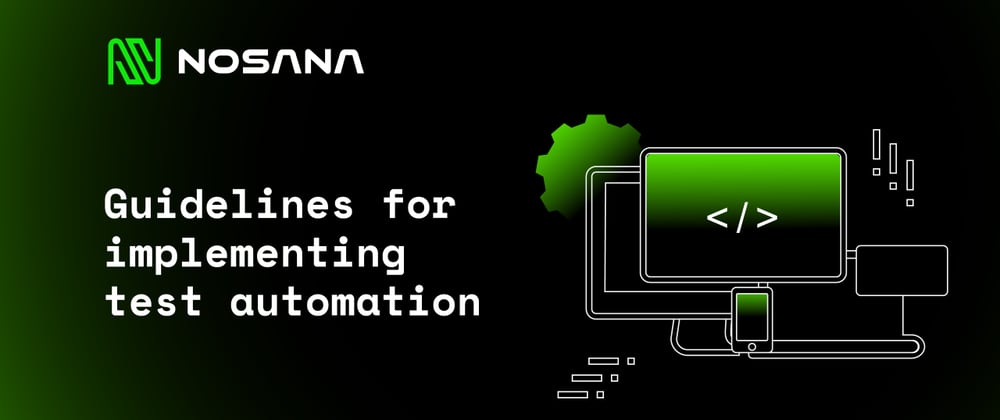A CI/CD (Continuous Integration and Continuous Deployment) pipeline would be incomplete without test automation. It helps ensure that code updates do not break existing functionality and that new features fulfill quality standards. However, implementing test automation in a CI/CD pipeline can be difficult, particularly for teams new to the process. This blog article will go over some best practices for deploying test automation in a CI/CD pipeline.
Establish your testing strategy
Have a thorough grasp of your project's testing plan. This may entail defining the proper testing frameworks and tools to utilize, as well as specifying the sorts of tests that must be conducted, such as unit tests, integration tests, and end-to-end tests.
Analyze your tests
Different approaches might be taken to evaluate your tests. When you keep tabs on your automated tests' performance over time, you can spot patterns and trends. This can show you which parts of your tests are constantly passing or failing, so you can focus on those. Verifying that all necessary features and sections of your application have been tested by your automated tests requires looking at their coverage. You can then prioritize the creation of new tests for the regions that have not been thoroughly tested yet. Monitor how long your automated tests take to complete, pinpointing the ones eating up too much of your time. This is useful for pinpointing where your test automation process is lagging and making adjustments to boost efficiency. The quality and productivity of your test automation procedure may then be evaluated according to KPIs like code coverage, test execution time, and test pass/fail rates. It is recommended to review test logs to identify the root causes of test failures and address any problems with the test automation system. To make sure your tests are up to snuff and serving the goals of your business, it's important to conduct regular audits of your test automation process.
Execute smaller tests first
Prioritize simpler test cases and execute them first, as they will likely run faster. This lets you test each case on its own and make sure it is covered and works well after functionality testing.
Version Control
This doesn't need to be mentioned, but we're going to mention it anyway because it is so fundamental to the test automation process. You need to use a version control system, especially if you are working with a larger team. It will help your team collaborate and integrate the different versions of the source code into one cohesive working state.
Automate the build
Another important point before you can get into automating your tests is to automate your builds. It is essential to have a standardized process with which you can create reproducible builds of your software. A mature build process should have all the dependencies needed to execute the build.
Early and frequent commits
This is a good practice to follow in general, but it is especially essential when you are working on a test automation project. You want to make sure that you commit your changes frequently. This will help you keep track of your progress and also help you identify the changes that caused a regression. You risk introducing instability into your code base. It will be harder for your team to continue working on a stable branch and build out new features if the main branch they are building on keeps changing. Hence, each team member should commit their changes once a day. This also affords you the opportunity to squash your commits into one commit per feature. This will help you to keep your commit history clean and easy to read.
Choose the right set of CI/CD tools for your project.
These tools should meet your overall project requirements while also supporting the frameworks, platforms, and technologies you require. When there are so many tools to choose from, it can be difficult to know which ones to use. You may want to consult a trusted technology partner to assist you in selecting the appropriate automation tools and avoiding delays in the software development cycle.
Parallel testing
Set up multiple tests to run in parallel to reduce the overall execution time and increase coverage. This approach allows you to test different modules or applications on multiple platforms and browsers at the same time, rather than one by one. Taking down the time needed by orders of magnitude when done correctly. Read more about why you should start with parallel testing here.
Smoke testing
Smoke testing, also known as sanity testing, is a type of testing performed on a new build to ensure that the most critical functionality of the build is operational. Early in the testing process, smoke testing is often used to find major problems with the build and see if it is stable enough to move on to more thorough testing. Typically, it is performed as part of the automated testing process. This entails creating a set of automated test cases that cover the most important features of the software and automatically running these tests whenever a new build is made available.
Documentation is essential
Documentation is not the most appealing concept, but it is crucial. The Stack Overflow Developer Survey of 2022 found that documentation is the best way for developers to learn about new technologies. It has become an indispensable part of the software development process. One of the main reasons documentation is crucial for test automation is that it makes sure your team is aware of how to use the product and the features offered. In addition to that, they'll be more familiar with how to pass data to the pipelines, in what format and with what properties, and what is done with that data and what you get back. Your team will be able to expedite the build process with this knowledge at their fingertips. They will also be better able to locate and resolve any problems that may emerge.
Transitioning into an effective CI/CD process.
Adopting an effective CI/CD solution is a value-added journey for an organization. It's a journey of continuous improvement. Taking small steps over time will lead to a mature process that your organization can rely on. This won't guarantee that you'll have 100% coverage, but it does mean that you can build a solid foundation on which you can start measuring and determining with your stakeholders which parameters and maturity levels you want to target. In the world of DevOps, there's always room for optimization and growth. Nosana can help you realize that goal, so try us out today!
This article was initially posted on nosana.io/blog/test-automation on January 19, 2023







Top comments (0)